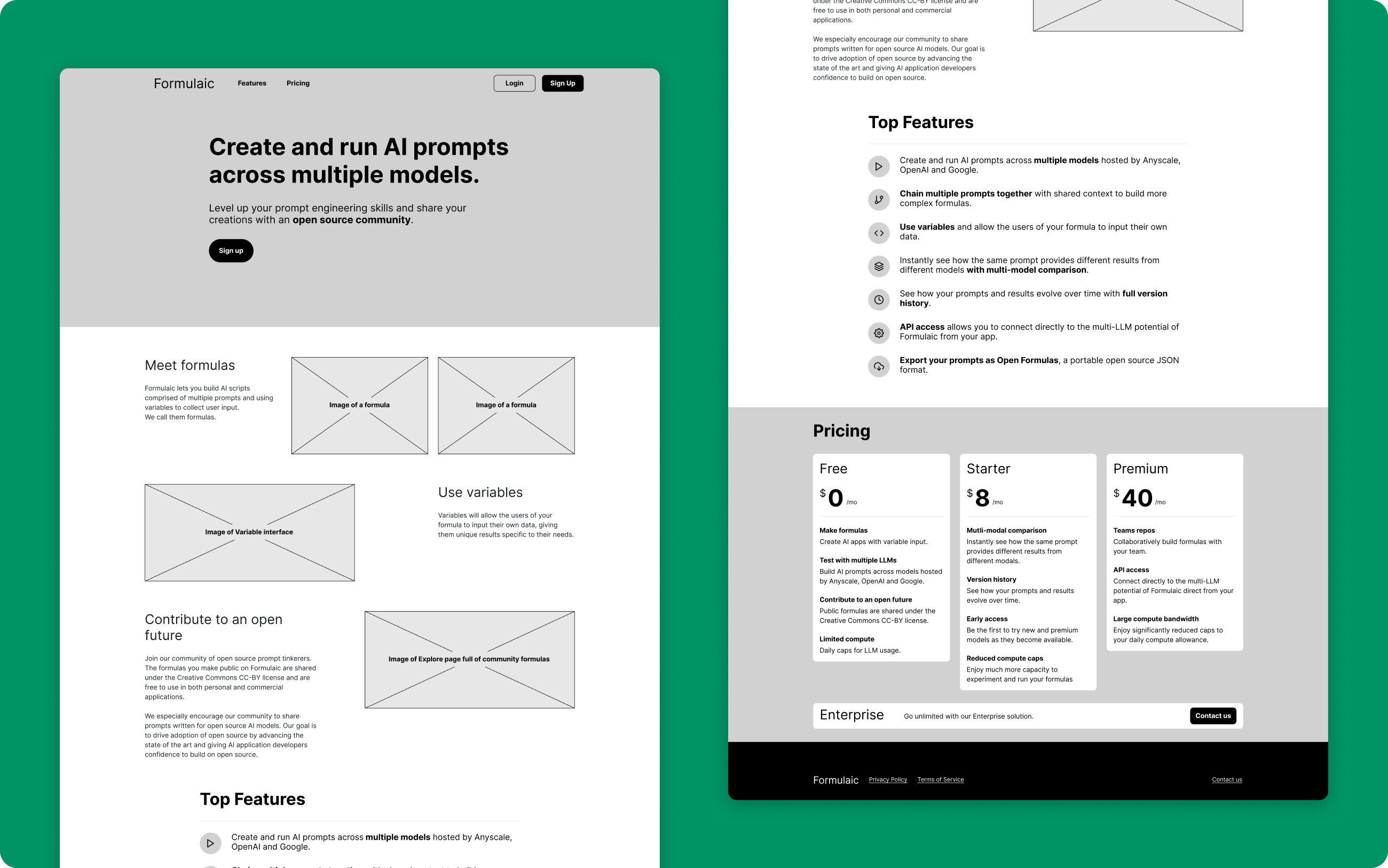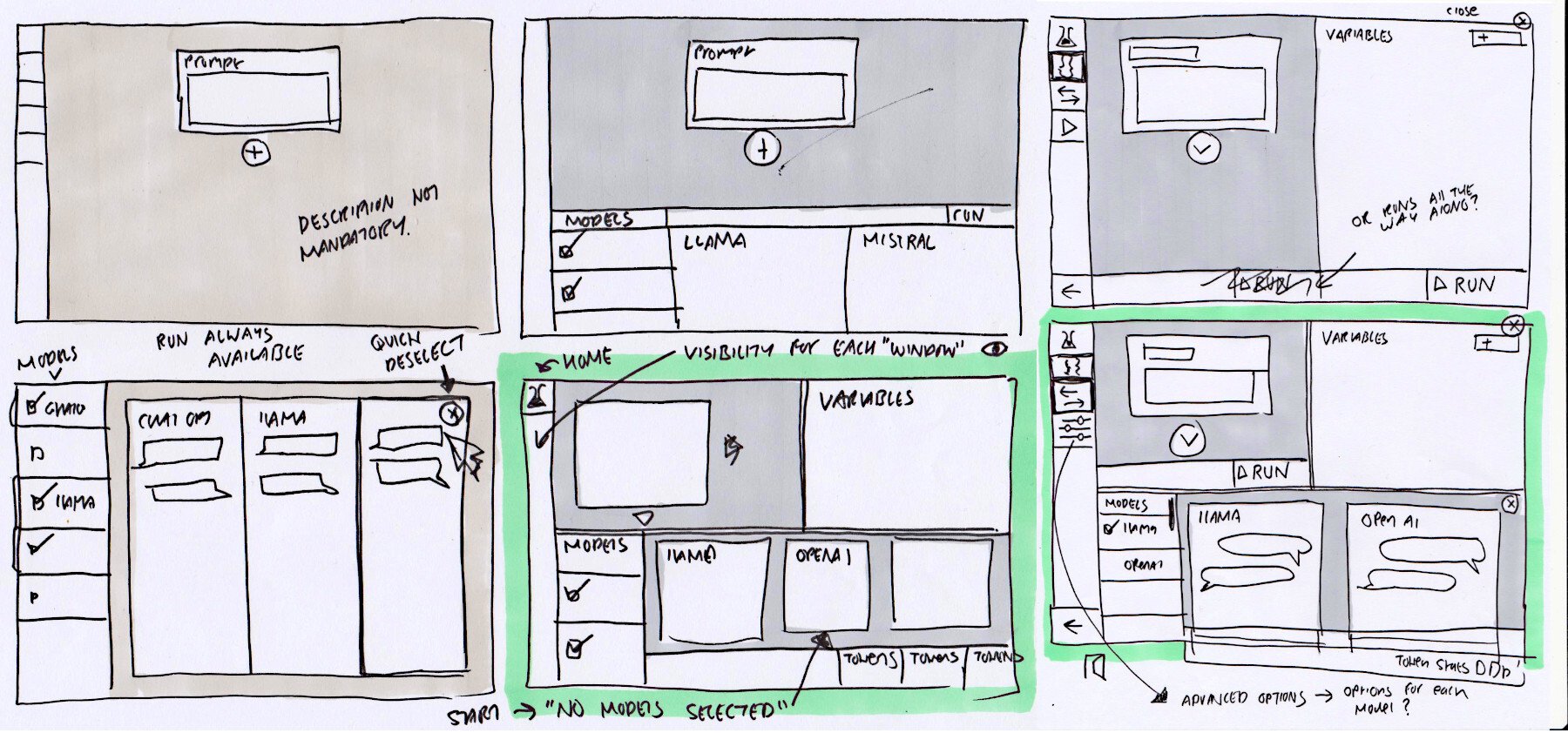A Short Story on Pivoting

In December 2023, what was formerly known as Project Alfred had transformed into Formulaic. Essentially, taking the tools designed by the team to build Project Alfred and making those the new product. Formulaic began as a community driven experiment which aspired to gift the power of multiple LLMs to seasoned prompt writers and prompt tinkerers alike. An app allowing users to experiment with different language models and share their projects with a community learning in a fast-paced field.
During a stakeholder review meeting, we discussed the changing AI tooling landscape and natural feature progression we had made. It was agreed that it made more sense to now pursue a developer audience. Our understanding was that developers and more technically competent users were already activated and in search of the values offered by our beta product.
A change in the desired audience will impact all aspects of the product. The language, content and design all need to align on clear messaging which appeals to the new market. In such cases it is important to detach oneself from the current product offering, resist the temptation of a "mould what we have" mindset and re-establish who our user is.
We initiated two courses of action. One, a concept test depicting a wireframe mock-up of a future "developer focused" marketing page. Two, sketch-work informed by our new user's needs, expectations and capabilities.
Making use of remote usability testing tools, we were able to reach our audience using a combination of demographic selection and layered screener questions. The concept test allowed us to evaluate the effectiveness of our copy and feature marketing without the need to build anything.

Going back to sketch work allowed us to effectively "kill our darlings" and start with fresh eyes from a new audience's perspective. There was no baggage or completed components on the canvas to tempt us. Quick drawings of flow diagrams and layouts were produced with the task of optimising the user's journey to value, prioritising the most important aspect to that target audience and stripping away everything else.

The goal is not to prevent us from using already created work and components, in fact it would be ideal to be able to reuse and repurpose work to fit our new direction. The goal is to give our new audience our complete attention and to ensure their needs and motivations are what drive our solution without influence of past endeavours.
Our test results captured some interesting patterns in participants' feature preferences. We also benefited from observing their unprompted thoughts and their direct responses to questions on AI and developer tools.
Tips for UX practitioners on the theme of pivoting:
- Harness everything you know about your new target audience, what are the problems they are experiencing? How are they currently resolving them? What are the gaps in our understanding we need further research on?
- Utilise low fidelity work (sketches or wireframes) to remove the influence of previous endeavours and thought processes.
- Landing page concept tests are an effective way to quickly evaluate the success of your proposed copy.
- Declare what you need to learn from your concept tests before building them, what assumptions do you need evaluated? An assumption map exercise is an effective team activity to prioritise assumptions.
- Focus on your strongest value proposition and streamline the journey your users take to experience it.